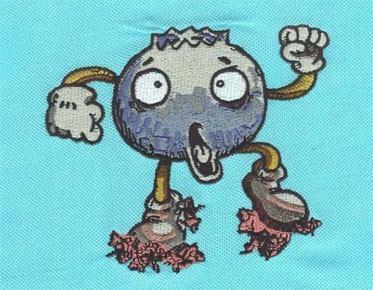A Simple Guide To Digitizing Lettering For Caps
The embroiderer always has to know about all the writing needs for the cap. From 3-D puff to outlined text, the game changes when embroidery is done on a cap. Once again, Eagle Digitizing here to help you digitize your collection in the most relaxed and secure way.
Lettering can be applied to any area of the hat: front, left panel, back, straps or sides. It can also be placed on the keyhole, which is the void area above the closure strap. The text is usually curved to match the outline of this void.
Hoops for keyholes are usually done with a standard embroidery hoop. Banknotes can also be embroidered, but this needs to be done before the cap is assembled through the tablet program.
However, when it comes to digitizing embroidery, each placement has its own considerations. First, it is important to consider the properties of the hat. For example, is it structured or unstructured? The former has buckram that reinforces and stabilizes the front panel, allowing it to stand on its own.
Profile height (low, medium or high) and hoop groove method must also be considered. The silhouette determines the height of the design. If the hoop is in a flat hoop, there will be more even tension on the fabric of the hat, and the order of stitching will be less important for good results. Unstructured hats or hat backs can be hoop flat. The hoops secure the hat next to the sweatband, so it's most stable near the brim.
Center
Seam Position
Let's start with the most common placement of headgear lettering: the center above the seam. When using the hoops, the lettering needs to be ordered so that it is sewn outwards from the center of the design. I prefer to digitize the lacing or lock stitch with a center running pad to control where the letters start to stitch. The design is designed to smooth the fabric from the brim of the lid up, from the center seam and outward.
Manually digitized padding allows you to control the lashing stitches; secure the fabric to the stabilizer; secure the center seam, and bridge it if necessary; and allow the thread to stay tight on the fabric, resulting in clean lettering. Bridging is when you sew over the seam, preventing the stitches from falling into it. This will only work if the letters completely cover the center seam. If the edge of the satin stitch falls on the seam line, adjust the kerning (the space between letters) to move the satin stitch straight away so that it falls directly on the seam or to the sides. Without this adjustment, the stitches will disappear into the seams, making the letters look uneven.
Panel
Position
When sewing on the left or right front panel, I prefer to start the lettering embroidery on the center seam side and then work outward to the outer seam, pressing the material away from the center seam. If using the hoops to sew on the side of the brim, remember to attach the fabric to the stabilizer to ensure a smooth seam. There is no structural reinforcement in this area; therefore, securing it to the stabilizer will prevent movement and loss of registration.
I usually lay down a manual center run liner to control the connection points, then do a contour or edge run liner to secure the edges, then a zigzag or double zigzag to add a loft for lettering. Again, in this case, the order must be made from the center and out, as the fabric is held tightly only by the chinstrap, which is pressed into the sweatband where the hat material and the brim meet.
Profile height will determine lettering height. For example, a design digitized at 2 inches high may be too large for a low-profile cap; similarly, a low-profile cap design will look too small on a high-profile cap. A design that is too large will cause the material to stretch at the end of the suture arm and give up registration.
Wider lettering tends to sew better than thin lettering. The extra width allows for more padding stitching to attach the fabric to the stabilizer for better registration.
Stitch
Type and Size
Most of the lettering on the cap, including the 3-D puff, is done using satin stitching. Fill and run pins are also sometimes used. Center-running underlays are almost always required when digitizing small text. The stitch length of the pad needs to be short (about 1mm) to ensure it doesn't poke out of the finished satin.
I don't digitize satin text smaller than 5mm or satin columns narrower than 1mm. Anything smaller is difficult to produce clean, crisp text. If embroidering fill stitch letters, plan to use satin stitch to outline them to define the edges of the fill.
Using contrasting lines for outlines can help make text stand out from the background structure. Remember that the satin profile should be at least 1mm wide. Set the letter to run a full letter - both inside and out - to keep it registered. When doing outline operations on 3-D float text, it is best to outline first and then emboss text. This prevents the outlines from distorting the edges of the inflated letters.
These are many things to consider when
digitizing to embroider on a hat. The design dictates the sewing sequence, but
using these methods ensures a successful finished product



